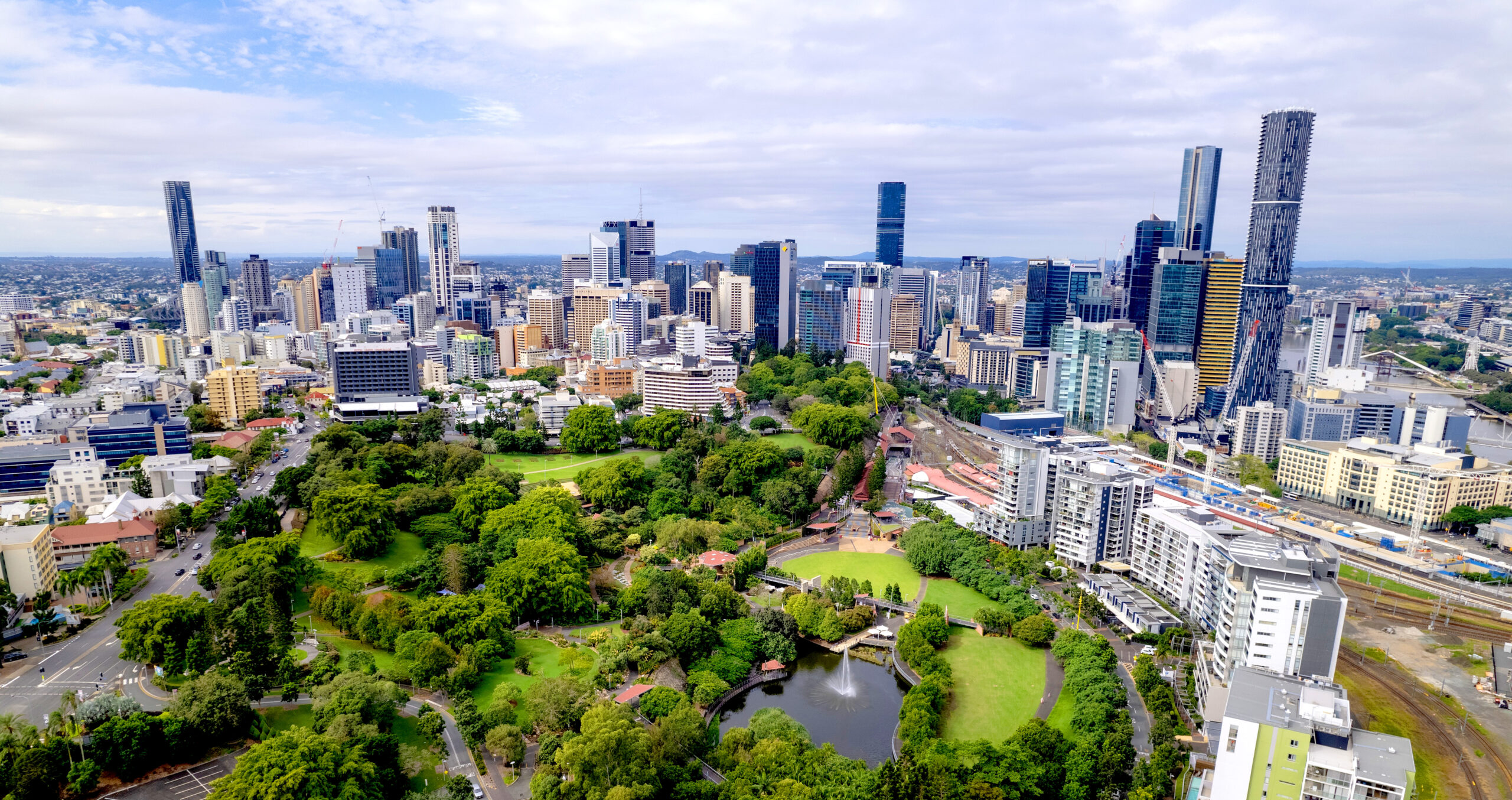Written by
Cooper Geyer
Published
31 May 2023
Brisbane’s history is intertwined with a series of significant construction projects that have left an indelible mark on the city’s landscape and cultural fabric. From iconic structures to transformative infrastructure, these projects have shaped Brisbane’s development, overcoming challenges and leaving a lasting legacy. In this article, we delve into the details of eight historic construction projects, highlighting their scale, financial investment, key challenges faced, and the innovative solutions that propelled their success.
Story Bridge
Completed in 1940, the Story Bridge stands as an iconic symbol of Brisbane, connecting the northern and southern parts of the city. This heritage-listed steel cantilever bridge, spanning 777 meters across the Brisbane River, presented challenges during construction due to limited funds and the labor-intensive nature of building the bridge’s steel framework. Skilled engineering techniques and meticulous project management were employed to optimise the available resources and overcome budgetary constraints, ensuring the completion of this vital transportation link.
Brisbane City Hall
Brisbane City Hall, completed in 1930, is Australia’s largest city hall and a cherished civic building. The construction of this grand edifice, standing at 92 meters tall including its distinctive clock tower, faced challenges during the Great Depression, which caused budget constraints. Resourceful measures were implemented, including careful material sourcing and innovative construction methodologies, to maintain the project’s progress and ensure the successful realisation of this cultural and administrative centrepiece.
University of Queensland St. Lucia Campus
Established in 1910, the University of Queensland’s St. Lucia Campus has played a crucial role in Brisbane’s growth as an educational and research hub. The campus covers an extensive area of 114 hectares along the Brisbane River. Developing the campus and its buildings required adaptive approaches to meet evolving educational needs, as well as overcoming logistical challenges associated with construction in a riverside environment. Collaborative planning, environmentally sensitive designs, and effective project coordination were employed to ensure the campus’s seamless integration and sustainable growth.
Roma Street Parkland
Roma Street Parkland, opened in 2001, transformed a former rail yard into a sprawling urban parkland covering an area of 16 hectares. The project required meticulous planning and landscaping to create an enchanting green space in the heart of Brisbane. Challenges encountered during construction included the remediation of contaminated soil and the implementation of sustainable water management systems to maintain the parkland’s ecological balance. Expert environmental consultants, innovative remediation technologies, and sophisticated water management strategies were instrumental in overcoming these challenges, resulting in the successful conversion of the site into a beloved recreational oasis.

Gateway Bridge
The Gateway Bridge, opened in 1986, plays a crucial role in connecting Brisbane’s central business district with the rapidly expanding eastern suburbs. Stretching over 1.6 kilometers, it became one of Australia’s longest bridges at the time of its completion. The project faced challenges such as designing a robust structure to withstand the region’s strong winds and ensuring minimal disruption to existing traffic during construction. Advanced wind tunnel testing, engineering simulations, and meticulous construction sequencing were implemented to address these challenges, ensuring the bridge’s durability and minimising the impact on commuters.
Queensland Performing Arts Centre (QPAC)
Established in 1985, QPAC has become a cultural cornerstone in Brisbane, hosting a diverse range of performances. The complex comprises multiple venues, including the iconic Concert Hall, Lyric Theatre, and Cremorne Theatre, covering a total floor area of approximately 61,000 square meters. Challenges encountered during construction included integrating multiple performance spaces, while simultaneously incorporating state-of-the-art acoustics and theater technology. Collaborative design consultations, utilisation of cutting-edge audiovisual systems, and the expertise of acoustical engineers and theatre consultants were instrumental in overcoming these challenges, resulting in QPAC’s reputation as a world-class performing arts centre

Mount Coot-tha Lookout and Botanic Garden
The Mount Coot-tha Lookout and Botanic Gardens offer breathtaking panoramic views of Brisbane and encompass an area of approximately 56 hectares. Established in the 1970s, the project involved creating extensive gardens, walking trails, and lookout points. Challenges encountered during construction included designing an extensive botanic collection while preserving the area’s natural landscape. Botanical experts, landscape architects, and environmental consultants collaborated to create a harmonious balance between curated gardens and the preservation of indigenous flora, offering visitors a serene and immersive experience in Brisbane’s natural beauty.
Legacy Way Tunnel
The Legacy Way Tunnel, opened in 2015, has significantly improved traffic flow and connectivity in Brisbane. Stretching 4.6 kilometres, it provides a crucial link between the Western Freeway at Toowong and the Inner City Bypass at Kelvin Grove. Challenges during construction included tunneling through complex geological formations and minimising disruption to existing road networks. Cutting-edge tunnel boring machines, comprehensive geotechnical surveys, and meticulous traffic management plans were employed to ensure the safe and efficient construction of the tunnel, resulting in reduced congestion and enhanced transportation efficiency.

Future projects
Destination Brisbane
Destination Brisbane, an ambitious integrated resort development, is set to redefine the city’s entertainment and tourism landscape. Led by the Destination Brisbane Consortium, this AUD 3.6 billion project aims to create a world-class precinct at Queen’s Wharf Brisbane. Spanning 26 hectares, the development will feature a luxury hotel, residential apartments, a convention centre, retail outlets, restaurants, and a stunning public space along the Brisbane River. Once completed, Destination Brisbane is expected to significantly boost Brisbane’s tourism industry, attracting both domestic and international visitors. The development will create numerous job opportunities, stimulate economic growth, and position Brisbane as a premier destination for entertainment, leisure, and business events. Additionally, the project will revitalise the riverfront, offering residents and visitors an immersive and engaging experience along the picturesque Brisbane River.

2023 Olympic Games
Brisbane’s aspiration to host the Olympic Games represents a transformative endeavor that could shape the city’s future in numerous ways. Following the announcement of Brisbane as the preferred host city for the 2032 Olympic Games, the city has embarked on a comprehensive plan to deliver world-class sporting facilities, transport infrastructure, and urban regeneration. Hosting the Olympic Games presents multifaceted challenges encompassing infrastructure, transportation, accommodations, and legacy planning. Brisbane has responded with a long-term strategic approach, leveraging existing infrastructure while investing in sustainable development. Projects like the Brisbane Metro and Cross River Rail will enhance transportation for athletes and spectators. Legacy planning focuses on repurposing Olympic venues for community use, maximising long-term benefits. The Games have the potential to transform Brisbane by attracting global attention, driving economic growth, and leaving a lasting legacy, improving public amenities and liveability for residents beyond the event.

Brisbane’s historic construction projects have shaped the city’s physical and cultural landscape, overcoming diverse challenges with innovative solutions. From the grandeur of the Story Bridge and Brisbane City Hall to the transformative Legacy Way Tunnel and Roma Street Parkland, each project stands as a testament to Brisbane’s visionary spirit and commitment to progress. These landmarks have become enduring symbols of the city’s growth, connecting communities, fostering cultural enrichment, and contributing to Brisbane’s vibrant and dynamic identity. CDI Experts are proud to call Brisbane home with our office located on Ann Street.






